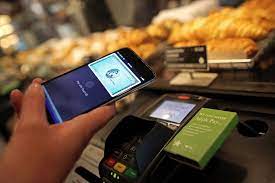Whether you shop in-store or online, credit cards are tremendously handy to use, but they do have their share of drawbacks. You might even be required to pay credit card interest rates much over 20% if your credit score is below average or you have a high debt-to-income ratio. Carrying a revolving balance for just a few months at this rate can make everything you bought substantially more expensive. If leveraging credit to your benefit is your objective, you should educate yourself as much as you can about how credit card interest works. To learn about the credit card APR, here is how to calculate it.
Credit Card Apr
The Consumer Financial Protection Bureau (CFPB) describes the interest rate on a credit card as “the cost of borrowing money.” APR, or annual percentage rate, is used to calculate credit card interest fees. The interest rate and other costs associated with a credit card are represented by an APR. It’s interesting to note that, as opposed to annually, credit card interest actually accrues daily. Credit card firms calculate daily interest using your average balance, fewer payments, and credits.
If you pay in whole before the due date, your APR exempts you from incurring interest. This is a goal you should work for anyway, as interest rates are often on the higher side.
How Credit Card APRs are Determined
Most card issuers calculate credit card APRs by increasing the prime rate by a predetermined number of percentage points. Simply said, banks and lenders use the prime rate to determine interest rates for a variety of financial products, including credit cards, personal loans, auto loans, lines of credit, and credit.
You’ll see right away that they promote a range of potential APRs as you look for the interest rate on any particular card. Generally, based on their credit score, credit history, and other considerations, individuals are issued interest rates that fall within the stated range.
Understanding Different Credit Card APRs
Be aware that different scenarios may result in varying interest rates being applied to credit cards. You can take steps to totally eliminate interest payments by taking the time to understand how various interest charges operate.
#1. Purchase APR
A buy APR operates perfectly as it should. This kind of interest rate is applied to new purchases made with your card that are not repaid within the grace period, which is the amount of time between the end of your billing cycle and the due date of your bill.
#2. Balance transfer APR
Payment transfer When you transfer amounts from other credit cards and loans, APRs are charged. It’s interesting to note that balance transfer APRs only apply as of the day you actually transfer a balance, and they are frequently only available temporarily.
#3. Introductory APR
An introductory APR is occasionally provided by credit cards to persuade customers to join up. For a length of time expressed in months or billing cycles, introductory APRs, which can be applied to both purchases and balance transfers, can be as low as 0%.
#4. Cash Advance APR
When you use your card to withdraw money from an ATM, your cash advance APR may be affected. The APRs for cash advances are frequently greater than the APRs for purchases or balance transfers on your card.
#5. Penalty APR
Finally, if you pay your payment beyond the due date or if you allow your account to go into default, you may incur a penalty APR. The maximum interest rate that can be applied to you is the penalty APR.
What Is a Good Apr for a Credit Card?
Currently, the average APR for credit cards is a little over 16%. This means that any interest rate that is lower than that benchmark can be regarded as “good,” but it’s crucial to keep in mind that credit cards often have higher interest rates than other financial products like personal loans. Also keep in mind that, in rare cases, you may be able to locate a credit card with a low APR of only 12%. Credit cards occasionally also have an introductory APR for a short period of time, typically up to 21 months or billing cycles.
On the other hand, if you have poor credit, a good APR will seem very different for you. In fact, people with bad credit are fortunate just to get approved for a credit card in the first place, much less one with an average APR.
How to Find a Credit Card With a Good APR
Make sure to compare credit cards based on the card issuer if you’re looking for one with a low-interest rate. The following are other pointers that can help you obtain a low-interest credit card:
#1. Have Good Credit
If your credit score is strong, you have a better chance of being approved for a credit card with a low-interest rate. For the best low-interest options, people with FICO scores of 670 or higher typically qualify.
#2. Look for a Card With an Intro APR
For a brief period, many credit cards offer 0% APR on purchases. Cards in this market can assist you in entirely avoiding interest for up to 18 months or longer. Just keep in mind that after the promotional time has passed, your rate will return to the standard APR.
#3. Think About Using a Bill Transfer Credit Card.
Some credit cards may provide a temporary introductory APR on balance transfers. With 0% APR for up to 21 months, these programs can assist you in consolidating and paying off credit card debt. Just remember that there will be a balance transfer fee, which is often approximately 3%.
#4. Examine Low-Interest Credit Cards.
Make sure to check cards and their rates before you apply as some cards offer a lower regular APR right away.
#5. Think About Various Card Issuers
Don’t forget to take into account credit cards from various issuers, such as Citi, American Express, Discover, Capital One, and others. You can then compare the finest credit card deals from all the main banks.
#6. Try to Get a Better Deal.
You can also phone the company that issued your credit card and request that they reduce the APR. You won’t know unless you inquire whether they are willing to comply with your request or not.
How to Calculate Credit Card Apr
Maintaining control over the increase of your overall credit card debt requires knowing how your credit card’s annual percentage rate (APR) is computed and applied to your outstanding balances.
How Does a Credit Card’s APR Operate?
The APR on your credit card is the monthly interest rate that you pay on any outstanding balances. Your credit card APR may be broken down yearly on your monthly statement, but you may do it yourself to get a monthly APR. You might use this information to decide which credit cards to concentrate on paying off quickly (if they are costing you too much in daily interest) and how much it will cost you daily to borrow money from your credit card provider. Also, you can also calculate your monthly APR to see how much it costs you to keep an outstanding balance.
You may discover instructions and formulae for figuring out your daily and monthly percentage rates, which are determined by your APR, as well as how they are applied to your balances, down below.
When Do you Have to Pay APR?
If you have a credit card balance, your credit card issuer will compute and establish the interest rate that will be applied to your balance. There are three primary categories of APR:
- Fixed-rate
- Variable rate
- Promotional rate
With fixed rates, unless otherwise specified, your APR is likely to remain constant for the duration that you own your card. Based on federal rates, variable rates might go up or down. Zero-interest or low-interest periods that are provided by credit card firms as initial bonuses are included in promotional rates.
How Do I Calculate My Monthly APR?
There are three methods you can take to determine your monthly APR rate:
- Step 1: Check your credit card statement to find your current APR and balance.
- Step 2: To calculate your monthly periodic rate, divide your current APR by 12 (for the 12 months of the year).
- Step 3: Multiply that number by how much money is left in your account.
How Do I Calculate My Daily APR?
Your interest may be calculated by your credit card provider using a daily periodic rate. Your daily APR can be calculated in three steps:
- Step 1: Check your credit card statement to find your current APR and balance.
- Step 2: To calculate your daily periodic rate, divide your annual percentage rate (APR) by 365 (for the 365 days in a year).
- Step 3: Divide the current balance by the daily periodic rate.
Why is Calculating APR Important?
You may determine how much of your money will be spent on interest by calculating your daily and monthly APR. This could encourage you to pay off your debt or assist you in determining which things are worthwhile charging to your credit card. You can learn more about the interest you are accruing over time by breaking down your interest rates on a daily and monthly basis. You can then use this knowledge to inform some of your financial decisions.
Low Apr Credit Cards
An APR (annual percentage rate), which may be fixed or variable, identifies a low-interest credit card. It usually counts as a low-interest card if the variable percentage’s bottom end is between 12 and 14 percent. The majority of credit cards have thus variable rates, which means that their APRs change in tandem with the prime rate.
#1. U.S. Bank Visa® Platinum Card
For purchases and debt transfers done during the first 60 days of your account opening, the card offers a 0% intro APR for 18 billing cycles on balance transfers. Additionally, there is a balance transfer fee of 3% of each transfer’s value or $5 minimum, whichever is higher. Your variable APR for purchases and balance transfers will increase to 19.24% – 29.24% after the intro periods are up.
#2. BankAmericard® credit card
For 21 billing cycles, there will be no interest charged on your purchases. On purchases and debt transfers made within the first 60 days of your account opening, there is a 21-billing cycle APR. After the introductory period, the ongoing variable APR for purchases and balance transfers ranges from 15.74% to 25.74%. Additionally, there is a balance transfer fee of 3% of each transaction’s value.
#3. Wells Fargo Reflect® Card
With this card, you can get a 0% introductory APR on purchases and debt transfers for 18 months. However, if you make the minimum payments on time during the intro offer and extension periods, each offer may be extended by up to three months. You must transfer balances within 120 days of account opening, and the fee will be 3% for the first 120 days, then increase to 5%; the minimum is $5.
#4. Citi Custom Cash℠ Card
The Citi Custom CashSM Card offers 5% cash back on purchases up to $500 made in your top monthly qualified spending area, which may be dining out, gas, or another one of the many possibilities. 1% back is given on all other purchases, including those made after reaching the monthly spending limit.
#5. Chase Freedom Flex℠
With this card, you can get 5% back on up to $1,500 in quarterly rotating bonus areas. You must activate your bonus categories before you can earn the 5% rate, unlike with the Citi Custom CashSM Card. You will receive 1% back each quarter after your spending reaches the limit.
The additional bonus categories on this card, however, make it unique. Additionally, you can get 5% cash back on trips booked through Chase Ultimate Rewards®, 3% at dining establishments and drugstores, and 1% on all other transactions.
#6. Wells Fargo Active Cash® Card
This card is convenient for folks who don’t want to manage their spending across bonus categories or several cards because it offers 2% cash back on all transactions. Additionally, for 15 months after your account starts, it offers a 0% introductory APR on purchases and balance transfers. Fees for balance transfers range from 3% for the first 120 days after account opening to 5%; the minimum cost is $5. And in order to qualify for the introductory rate, transfers must be done within 120 days of the account establishment. The variable APR on both purchases and balance transfers increases to 19.74%, 24.74%, or 29.74% after the introductory period.
Is 24% Apr High for a Credit Card?
Yes, a credit card with a 24% APR is expensive. A higher credit score will allow you to qualify for cheaper rates even though many credit cards offer a range of interest rates.
Is 25% Credit Card Apr High?
This is an illustration of a “bad APR,” as carrying a balance with a 25% APR has the potential to easily lead to a cycle of consumer debt, leaving the cardholder worse off than they were before.
Is 24.9% Apr Good?
A 24.99% APR is significantly more than what most borrowers should anticipate paying and what most lenders will even provide, making it unsuitable for mortgages, student loans, or vehicle loans. However, for persons with poor credit, a 24.99% APR is appropriate for personal loans and credit cards.
How Can I Lower My Apr Rate?
- timely payment of your invoices.
- Keeping a low balance.
- paying off any debt as soon as possible.
- if you can, diversify your mix of credit.
- minimizing the overall credit use.
Is 30% Apr Too Much?
Credit cards, mortgages, student loans, and vehicle loans should also not have APRs of 30%.
Does Apr Apply if I Pay on Time?
Your APR won’t therefore apply if you pay off your credit card balance in full and on time each month.
Related Posts
- What Is A Good Interest Rate On A Credit Card? (Updated)
- WHAT IS APR: How it works
- FINANCE CHARGE: What Exactly Are Finance Charges? Why Are They Important?
- Best Business Credit Cards For Startups In 2023






